The saying goes that you cannot eat your cake and have it, too. But what if you could?
Plug-in hybrids like the Jeep Grand Cherokee 4xe can be electric vehicles – without the problems that beset electric vehicles. It can travel about 25 miles without burning any gas. But you don’t have to worry about what you’ll do when it runs out of range.
You can charge it back up.
Or fill it back up.
That’s having your cake – and eating it, too.
The only catch being – can you afford it?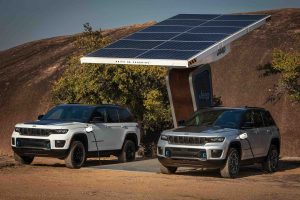
What It Is
The Grand Cherokee is Jeep’s mid-sized SUV.
It is not a crossover SUV – the latter referring to a vehicle that looks like an SUV but is mechanically/functionally more like the cars that crossovers are based on. Those cars being (typically) front-wheel-drive cars (with AWD usually optional and sometimes standard) and not having the two-speed transfer case and 4WD Low range gearing that is one of the mechanical/functional attributes that defines an SUV.
The leverage advantage of having 4WD Low range gearing gives SUVs more pulling power to get through deep snow and mud, especially on unpaved surfaces. But it’s not just that. An SUV is also usually heavier-duty in its construction, so as to be less likely to break if used off-road (and also for towing, on road).
That’s why the GC is an SUV rather than a crossover.
It can also be an electric SUV – if you buy the 4xe version, which is really a drivetrain option for the Overland and Summit/Summit Reserve trims and standard equipment with the Trailhawk, the most off-road-ready of all GC trims.
In addition to the plug-in hybrid/four cylinder gas engine drivetrain (which is also stronger than the available V8 drivetrain) this one comes with adjustable ride height for more clearance to get over deep snow and through deep mud/standing water (up to tw feet deep) plus an electrically de-coupling front sway bar (to enable more front wheel articulation and so crawl over objects in its path more readily), Goodyear all-terrain tires, front tow hooks and a special closed-circuit camera system that feeds images of wheel position/angle into the cockpit so the driver doesn’t have to stop, get out and look to see where the front wheels are pointed. 
This one stickers for $65,755.
But you can also get the 4xe drivetrain – without the Trailhawk off-road enhancements – for $60,360.
You can also skip the plug-in hybrid drivetrain altogether, if you prefer. The Laredo trim comes standard with a 3.6 liter V6. This one stickers for $39,000 to start. And if you prefer a V8, you can still get that with the Overland $55,910 to start) and Summit ($59,675 to start) trims for an additional $3,995.
If you select the 4xe drivetrain or the V8, 4WD is included as part of the deal. V6-equipped models can be ordered with 4WD, if desired.
Two rows of seats and five-passenger capacity are standard but those who need an additional row – and seating for seven – can get them in the Grand Cherokee L (reviewed separately, here).
A 19 speaker McIntosh audio system is available in higher trims (including the Trailhawk 4xe) and Limited and Overland trims now come standard with a larger, 10.1 inch touchscreen.
Trailhawk models get gloss black exterior trim accents.
What’s Good
No waiting to charge up for the plug-in hybrid.
400-plus miles of range with the plug-in hybrid.
More than V8 power (375 horsepower) with the plug-in hybrid.
What’s Not So Good
Hybrid drivetrain’s buy-in cost negates fuel-saving benefits.
Reduced towing capacity (6,000 lbs.) with the plug-in drivetrain.
Trailhawk is only available with the plug-in drivetrain, mightily decreasing the affordability of the most off-road-ready version of the GC.
The GC still comes standard with a 3.6 liter, 293 horsepower V6 engine – and is available with a 5.7 liter V8.
Probably not for long, though – which is harbingered by the new plug-in hybrid drivetrain and more so by the fact that neither the V6 nor the V8 are available with the most off-road-capable version of the GC.
That one being the Trailhawk.
The one designed to appeal specifically to buyers who would probably be inclined to buy the V8 – if it were available.
So, how to make a 2.0 liter four cylinder engine more appealing than a 5.7 liter Hemi V8? Make it more powerful.
First, turbocharge the 2.0 liter four, bringing it up to 270 horsepower. Then add what Jeep calls an Integrated Transmission Traction Motor/17.3 kWh battery for a combined output of 375 horsepower and 470 ft.-lbs. of torque. This outguns the still-available (in other trims) 5.7 liter Hemi V8, which is less powerful than it was before. It now offers 357 horsepower and 390 ft.-lbs. of torque.
The plug-in set-up allows for electric-only driving (when the battery is fully charged) of about 25 miles. That is obviously much less range than a pure electric car, but the critical factor is not being tethered to a cord. As a practical matter, a plug-in hybrid has more range because it does not have to stop for long when it runs out of range. The gas engine comes online and you keep going – in this case, for more than 400 miles of range on a full tank.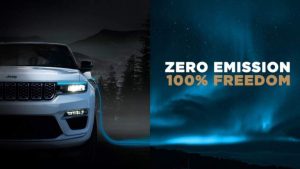
When you have time to stop – for a charge – you can plug the 4xe in as you would an electric car. But if something unanticipated comes up and you need to drive, now – not tomorrow morning – you can.
Mileage isn’t really the point here, though.
The GC 4xe rates 23 city, 24 highway – better than the Hemi’s 14 city, 22 highway – but not staggering so. Though the city number of the 4xe is 9 MPH higher – which sounds like a lot, by itself – the combined city/highway difference is only about 5 MPG. That isn’t much gain, in view of the plug-in hybrid’s cost. One could for instance buy a GC Overland ($55,910) and equip it with the 5.7 V8 ($3,995) and be looking at a sticker price of $59,905 – vs. $60,360 for the base 4xe without the Trailhawk upgrades.
In theory, you might be able to squeeze more mileage out of the 4xe if your daily driving allows you to operate often in electric-only mode – and assuming you regularly start out with a full charge, so as to avoid the gas engine coming on for most or even all of your drive.
The difficulty there is the same with full-time electric cars in that you have to budget the time to fully recharge – several hours at least on 240V and overnight on 120V. If you can arrange your driving around that, you may approach the “56 MPG e” rating, which is a difficult-to-parse (and arguably misleading) measure of an EV’s MPG-equivalent fuel consumption.
The real point is maintaining what buyers expect in terms of power/performance in a top-line GC, which in the near-future will not be available with the V8 at all. Stellantis – Jeep’s parent company – has already announced the pending retirement of the 5.7 liter Hemi in all Stellantis models after the 2024 model year. The Trackhawk – which was powered by the same supercharged V8 used in the Hellcat Charger/Challenger – has already been retired. The plug-in hybrid drivetrain is a way for Jeep to comply with existing and pending federal regs that have effectively sealed the doom of V8s and also V6s without giving in entirely to 100 percent “electrification.”
On The Road
Being able to just drive – as far as you need to, whenever you need to – is a thing we have taken for granted that “electrification” is taking away.
Whatever your take on electric-only vehicles, there is no getting around the fact that there is more to them than just driving them. If wherever you need to go is farther than the range you have left, you will have to think about where you’ll charge – and whether you have the time to wait for it. You may find you need to get someplace right now, but haven’t got the range to get there right now. Yo may find there is no place on your way to “fast” charge – and so may have to go out of your way to get there.
No such issues with a plug-in hybrid like the 4xe. It eliminates every hassle of owning an EV while preserving every benefit of owning a non-electric vehicle. Some may say it’s not as “clean” as a pure electric vehicle, but this is a debatable contention given that most EVs are powered mostly by hydrocarbon fuel-burning power plants and their high-powered electric batteries (which are much larger than a hybrid’s) consume more power that way, too.
But the point – if the object isn’t to just limit how far people can drive and how often they can drive – is that a plug-in hybrid doesn’t restrict people’s driving.
The 4xe is almost Hemi-quick, too.
It gets to 60 in about six seconds, dead heat with the Hemi-equipped GC’s 6.2 seconds. The chief difference here is feel – and sound. The 4xe combo pulls with more authority at low-mid-range speeds with less pressure on the accelerator pedal. But missing is the bass rumble of the V8 as you trundle along and when you floor the accelerator, the 4xe’s four cylinder engine sounds like what it is – as opposed to the authoritative sound of the V8.
It’s weird going V8 fast without the V8. But it’s nice that you still can – and without having to stop or sweat how soon you’ll have to.
If you choose the hybrid powertrain, you will get two fuel doors – one for gas, the other for electricity. Thoughtfully, the door for electricity is located up front, on the driver’s side front quarter panel – so you don’t have to back up to assure the plug is close enough for the cord to reach wherever you’re going to plug in to.
If you choose the Trailhawk with the plug-in powertrain, you will get an adjustable ride-height suspension that can be lowered or raised via a selector button on the center console. The highest setting provides 10.9 inches of ground clearance. Jeep’s most capable 4WD system – Quadra Trac II – is also part of the package. It includes a 2.72:1 Low range, 47.4:1 crawl ratio and locking differentials, 18 inch wheels with all-terrain tires and multiple driver-selectable terrain modes.
You also get a set of blue-anodized tow hooks ip front.
4xe models also get hybrid-specific displays in the main gauge panel as well as the secondary LCD touchscreen in the center stack. These include dual range (electric-only and gas-electric) and real-time power flow, so you can see what’s being powered – and by what. There is also a charge scheduling menu, but the beauty of this Jeep is you don’t have to schedule your charging or even think about it much, if at all.
The Trailhawk isn’t just the most capable version of the GC. It is also one of the most luxurious. It comes standard with leather seats (heated and cooled) and it can be equipped with driver and front seat passenger massaging seats, front seat passenger 10.25 LCD touchscreen that mirrors the main touchscreen in the center stack, night vision and a powerful McIntosh premium audio system with 19 speakers. It’s so luxurious that even the top-of-the-line Summit Reserve – which approaches $80k – isn’t that much more luxurious. It has a few additional niceties, such as open pore wood trim and a soft-to-the-touch suede headliner. But you will be hard-pressed to feel deprived of anything significant in a loaded Trailhawk 4xe.
Jeep seems to be very serious about sluicing buyers toward the hybrid powertrain by installing it in the most capable (and almost-most-luxurious) version of the GC. Probably so as to assure them that they’re not going to be deprived of anything, besides the number of cylinders under the hood.
The Rest
The 4xe’s maximum tow rating – 6,000 lbs. – is a couple hundred less than the V8-equipped GC’s 6,200 lb. maximum. But the real difference is the cost – of the hybrid drivetrain – and the fact that you must pay it if you want the Trailhawk upgrades.

This has raised the bar for entry much higher.
In 2021, you could buy a GC with the Trailhawk equipment (and a gas V6) for $46,150. The V8 was available, optionally – for an additional $3,395 – bringing the total MSRP to $49,545.
The new Trailhawk costs an astounding $16,210 more this year than it did just two years ago. That’s quite a price hike – and it is probably going to cost Jeep some sales for the simple reason that there are fewer people who can afford to spend $65k on a vehicle, irrespective of its desirability. This can also be seen as what it effectively is – that being a restricting of the most capable version of the GC to those affluent enough to be able to afford it. Which is what “electrification” amounts to, in practice as opposed to rhetoric. Electrified vehicles are more expensive and becoming even more so – due to the expense of raw materials such as lithium – rather than less expensive, as people were told they would be.
This is also why electrified vehicles tout power, capability and luxury. Because people who can afford to buy them won’t accept a basic vehicle at that price.
But it means that average people who would prefer a basic – but capable – vehicle – are being priced out of the market
The Bottom Line
The GC 4xe is hard to fault – except insofar as what it costs.
. . .
If you like what you’ve found here please consider supporting EPautos.
We depend on you to keep the wheels turning!
Our donate button is here.
If you prefer not to use PayPal, our mailing address is:
EPautos
721 Hummingbird Lane SE
Copper Hill, VA 24079
PS: Get an EPautos magnet or sticker or coaster in return for a $20 or more one-time donation or a $10 or more monthly recurring donation. (Please be sure to tell us you want a magnet or sticker or coaster – and also, provide an address, so we know where to mail the thing!)
My eBook about car buying (new and used) is also available for your favorite price – free! Click here. If that fails, email me at EPeters952@yahoo.com and I will send you a copy directly!


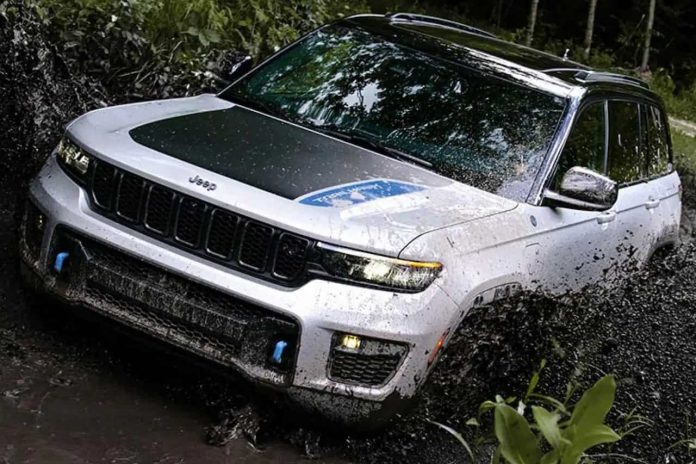

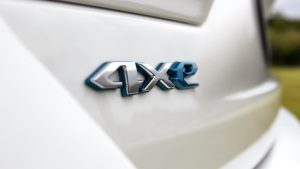
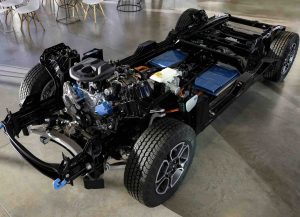
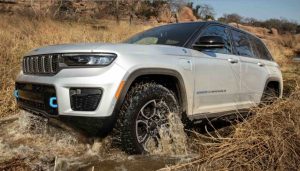
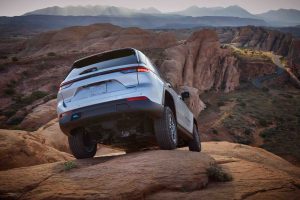





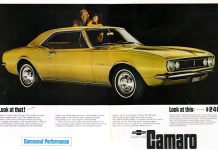

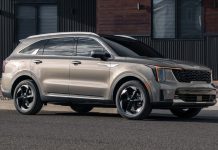

I have the JGC Trailhawk with the 3.0 diesel. 30-32mpg highway, 24 average around town, 415 ft lb of torque, tows over 8,500lbs, tows like a dream on the highway and is as comfortable as a cadillac. I guess this is rhetorical, but can someone explain to me why they would change the success formula? Oh, ESG by blackrock, vanguard, et al. Got it. I wont be selling it until diesel hits $10 a gallon. Hopefully by then hydrogen will make its emergence in the market. Ill be keeping the Ram with the hemi also. I bought it last year when i saw the writing on the wall with regards to V-8s. I did sell the SRT, 12 mpg on hi-test for a sunday driver just wasnt feasible in retirement, but it was a great car, loved the 392 ci motor, i do miss getting sideways for funsies.
Hi J,
You’ve answered your own question! Stellantis – Jeep’s owner – has gone all-in on EeeeeeVeeeees and I suspect it will be the death of brands like Jeep and Dodge. The ’23 Trailhawk is now a $65k vehicle because it is a plug-in hybrid-only vehicle. When the V8s and V6s are gone – and replaced by plug-in hybrid drivtrains – Jeeps in general will be so costly that Jeep will become, in effect, a luxury brand. Can Jeep survive by selling half as many vehicles for $16k-plus more each?
We’ll soon find out…
I just read that Jeep, one of the mostly made in the US brands is packing up the tent and moving del sur, due to EV future builds. Such a shame. I know you left it as a question, will these brands survive, I think they will, people have become so compliant and willing to take whatever they are fed and forced into, EV will be their future, another turn of progress that TPTB exploit on the way to the next great thing as they cash in. Guess i will be holding what i got for a while and put away whatever parts i think ill need down the road. Maybe its time to head to mexico and start buying VW beetles and fixing them up for daily drivers.
I think diesel hybrids would have been a really good idea, small crd’s and a hybrid motor setup with batteries that can be affordably replaced, scale up as need from commuter car to work truck. Then again this isnt about capitalism or commonsense.
Thanks Eric, I enjoy your work, its honest and informative.
Thanks, J –
I hope you’ll enjoy the swan song review of the ’23 TRX just posted as well!
I was eagerly waiting for your report on this when you said you had one, then I got disappointed when it was the 4xe. Wife has a V8 version and likes it a lot. I do too. She will be looking for a new one around this time next year and the V8 will be gone but hopefully the new Hurricane I6-TT will be avail. as I’m sure that’s the one she will want.
You said V8 is avail, but it’s not on their ’23 build it’ site. Nor is the air-ride. Could just be their site is messed up though as these tend not to be too accurate.
And I’m going to trick her into driving the 4xe just to see what she thinks. I’ll let ya know.
Hi Chris,
The V8 is still available – but not with the Trailhawk. They are pushing the hybrid drivetrain, hard – by effectively forcing you to buy it if you want the Trailhawk off-road equipment.
Here’s the ’23 Build & Price. No model shows an option for the V8.
https://www.jeep.com/bmo.grand_cherokee_wl.2023.html#/models/2023/grand_cherokee_wl
Again, could just be that it is not accurate, as I have ‘built & priced’ 3-4 Jeep/Ram vehicles in the past few years, and when I go to the dealer to get/order one, their system is often different than the consumer site. I hope so, because she will be buying in 9-12 months, and will want the V8 or the not-announced yet Hurricane I6 TT.
If I try finding a V8 option for the ’22 models, I can, but I doubt I can order a 22 now.
But the real difference is the cost – of the hybrid drivetrain – and the fact that you must pay it if you want the Trailhawk upgrades.
Better stereo, seats and LCD panels are cheap. The adjustable suspension is probably pretty pricy to fix but I doubt it costs much more on the assembly line. So that battery pack is a high dollar item, and to make it more palatable they throw in the extras. And hey, you’re getting a tax deduction anyway so might as well load up.
It’s a funny old ride, ain’t it?
Can one buy the Ball and Chain model?
Regulation is nothing more than a slave situation, all it really is.
Native Americans, the Cherokee, Chickasaw, et al owned slaves themselves. Slave ownership equates to wealth and money. Not just some dumb white idiots own slaves, get real.
Hiram Revels was a half-breed from Mississippi, the first US Senator that was half black and half Native American.
The casinos that operate on Native American reservations need to participate in the reparations, they need to contribute money, so the descendants of slavery can benefit at Native American expense. It’s only fair.
The Choctaw were skilled slave hunters, made a good living hunting down runaway slaves. Once captured, you lost a foot, chopped off. You won’t be running that much anymore.
The slave trade was a huge industry all over the world. All before the US was even a declared independent nation.
Montreal was the slave trading capital in the western hemisphere.
Not to mention other parties involved, you know who they are and have been that way for centuries stretching to eons now.
Buy a Jeep Cherokee then hustle on back to the Appalachians where you belong because the slaves you forced to march with you on the Trail of Beers ran away as soon as they arrived in Oklahoma.
Poor old Chief Pontiac can’t find a ride these days.
Too bad the Hemi V8 is on the way out. It’s the only version of this Jeep that I would want. For long term its the best bet, as it would be the most simple setup.
To be honest, the Hemi engines are about the only thing they have that people find desirable.
Looks like the $7,500 Federla tax credit is applicable – Depending on your state, it may approach 10k, artifically changing consumer cost at the expense of others……
$60k for a hybrid Jeep with a Fiat 4-cylinder engine. That story won’t end well.
I would like to see if you manage to get the $95K Grand Wagoneer reboot to test drive.
Hi Graves,
It’s on deck!
PS; Keeeeeeeeeeeev!
Seems to be a solution looking for a problem to me. As all things EV are. Well, there is a problem I suppose. The state regulatory apparat. Just not a real world problem. But a problem we do have to pay for. And in this case, pay a LOT.
Just gonna drop this here
https://news.yahoo.com/brother-sister-had-stop-6-090000489.html?utm_source=fark&utm_medium=website&utm_content=link&ICID=ref_fark
It seems very capable on paper and nicely outfitted, but I doubt I’ll see one on a major off-road trail. Maybe a paved dirt road at best since $65,755 is not that inexpensive. Sure, if I had the coin it could be my Sunday vehicle since I could keep my Toyota 4Runner for everyday. However, I have to wonder what demographics this Jeep is marketed to? Someone who wants to really get out on a untamed trail will not pick this to do it.
Hi Manse,
The alarming to me thing is the harbingering of what vehicles are going to cost as “electrification” proceeds. This is a nice rig, but it is also unaffordable. Who – except for the very affluent few – can afford to spend $60k-plus on a vehicle (plus the taxes and insurance)? I imagine you’d need to be earning at least $150k annually for this to be other than a completely extravagant purchase.
Manse,
Most would indeed hesitate to put a $60+k vehicle in the bushes and brush, and over the rocks and mudholes. I know I would. If I were stupid enough to buy such a thing for off road use, I would be very selective of how far “off road” I would go.
JK,
Perhaps that’s part of the “Rewilding” plan of the UN to return rural areas to nature. If one can’t afford a vehicle to go off road, that effectively restricts those areas, right?
Mark,
These morons think that “rewilding” will result in well groomed parks for them to enjoy. Sorry, that’s not the way the real wild works. If you live there, as I do, you know that pushing back the jungle is a steady job.
JK,
I get what you’re saying, but, based on your comment, I was unclear about what I meant. I meant that TPTB (i.e. the WEF, UN, and the like) want to make rural and wilderness areas off limits for us; they don’t want us even going to the national and state parks, let alone rural and wilderness areas. Oh no, they want them for themselves! Only our “betters” should be able to go to these places well outside the cities. What could one prong of that plan be? What’s one step that could be taken to make that happen? Restrict the availability of vehicles to those that can’t really go there, i.e. EVs. Think about it: EVs barely have the range to access these places, let alone explore them. Doesn’t that accomplish their nefarious goal to keep us out of rural and wilderness areas?
Mark,
Why would our “betters” WANT to go there, if the grass isn’t manicured, and the trails well kept? By who? Since the plebes aren’t allowed to go there. Well, slave labor possibly, i suppose. But then the slaves would see it, and experience it, and just might revolt. Or simply walk off into the bush.
No, the rewilding plan is to remove land from use, driving up the value of privately owned land and increasing landowners’ wealth. If marginal land is reachable thanks to technology it might make existing land holdings worth less.
And it makes me wonder, especially wheeling out west, when you hit a major rock obstacle and it punctures/damages the battery pack. Most everybody in the ICE off-road community has armored skid plates the length of the vehicle. Does this Jeep or can plates be made to fit? Because I’m thinking a Thermal Run-away in a National Forest/Park is a very bad thing.
MJ, true-ESPECIALLY during the dry season!